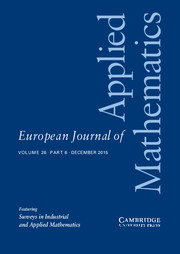An Introduction to Maximum Principles and Symmetry in Elliptic Problems
Originally published in 2000, this was the first book to present the basic theory of the symmetry of solutions to second-order elliptic partial differential equations by means of the maximum principle. It proceeds from elementary facts about the linear case to recent results about positive solutions of non-linear elliptic equations. Gidas, Ni and Nirenberg, building on work of Alexandrov and of Serrin, have shown that the shape of the set on which such elliptic equations are solved has a strong effect on the form of positive solutions. In particular, if the equation and its boundary condition allow spherically symmetric solutions, then, remarkably, all positive solutions are spherically symmetric. Results are presented with minimal prerequisites in a style suited to graduate students. Two long and leisurely appendices give basic facts about the Laplace and Poisson equations. There is a plentiful supply of exercises, with detailed hints.
- Was the first book to present the basic theory of symmetry by way of the maximum principle
- Proofs spelled out in exceptional detail, and are elementary as can be
- Exercises include results, made accessible by detailed hints
Reviews & endorsements
Review of the hardback: 'The originality of this book mainly consists in new proofs and new extensions of quite well known results concerning maximum principles and symmetry properties related to semilinear elliptic equations.' Mathematical Reviews
Product details
April 2011Adobe eBook Reader
9780511885457
0 pages
0kg
This ISBN is for an eBook version which is distributed on our behalf by a third party.
Table of Contents
- Preface
- 0. Some notation, terminology and basic calculus
- 1. Introduction
- 2. Some maximum principles for elliptic equations
- 3. Symmetry for a non-linear Poisson equation
- 4. Symmetry for the non-linear Poisson equation in RN
- 5. Monotonicity of positive solutions in a bounded set O. Appendix A. On the Newtonian potential
- Appendix B. Rudimentary facts about harmonic functions and the Poisson equation
- Appendix C. Construction of the primary function of Siegel type
- Appendix D. On the divergence theorem and related matters
- Appendix E. The edge-point lemma
- Notes on sources
- References
- Index.










